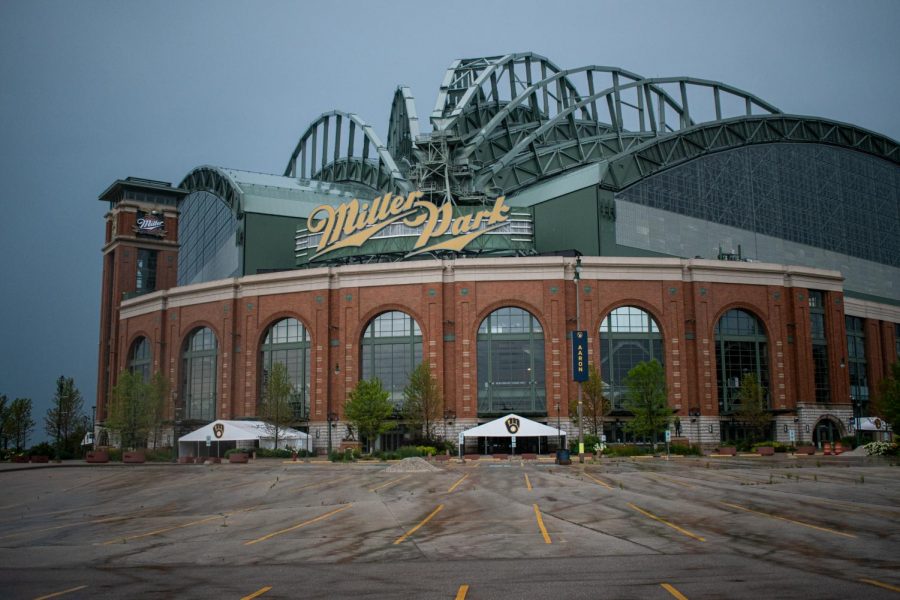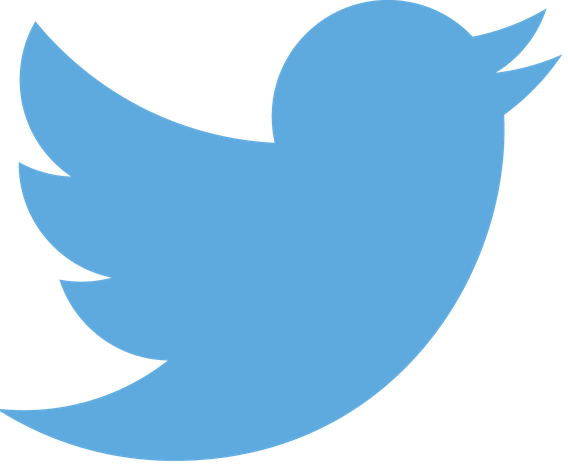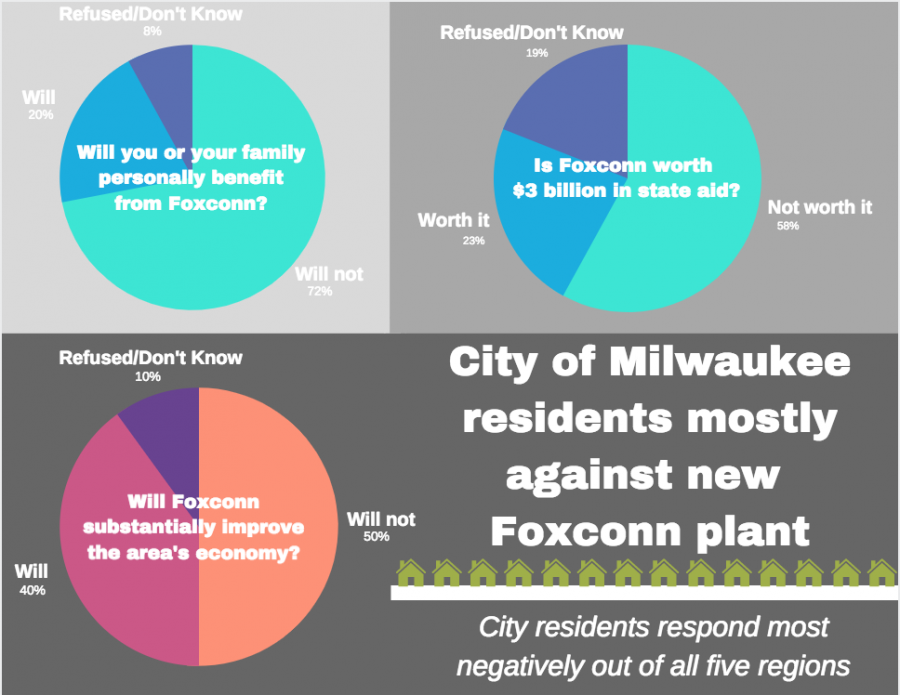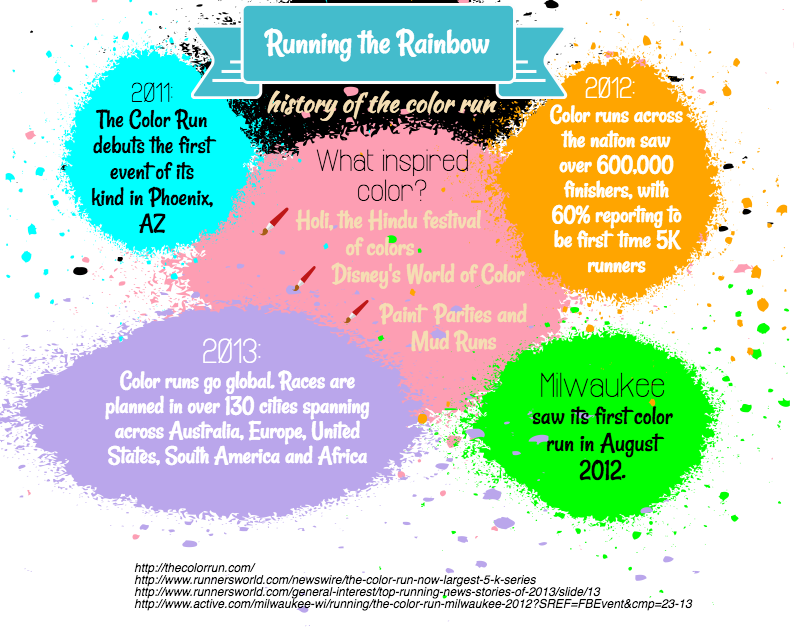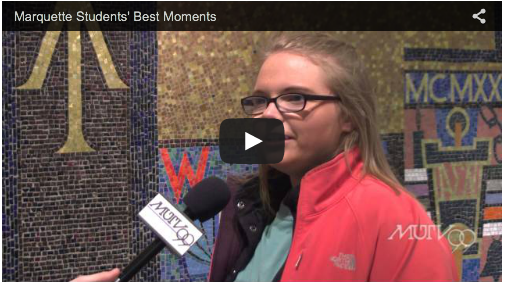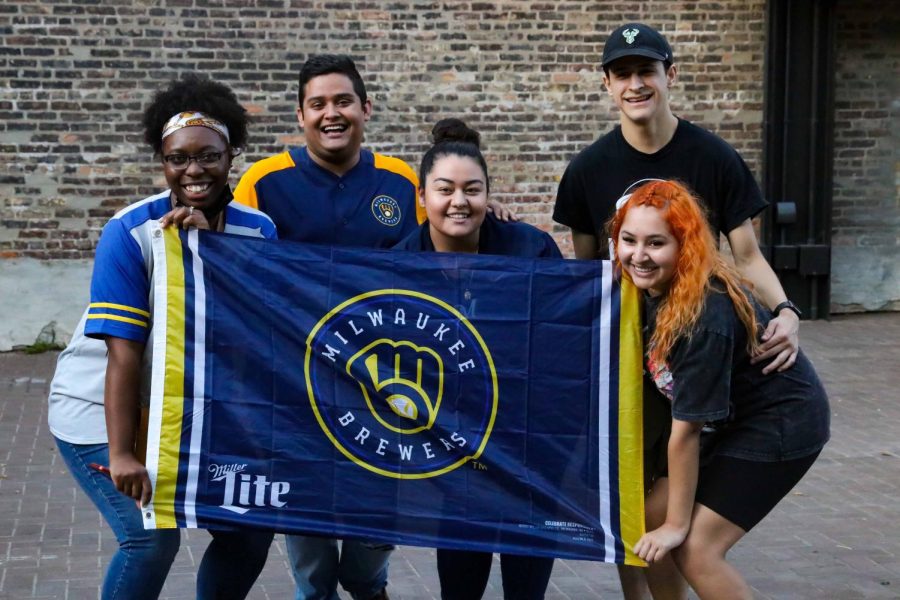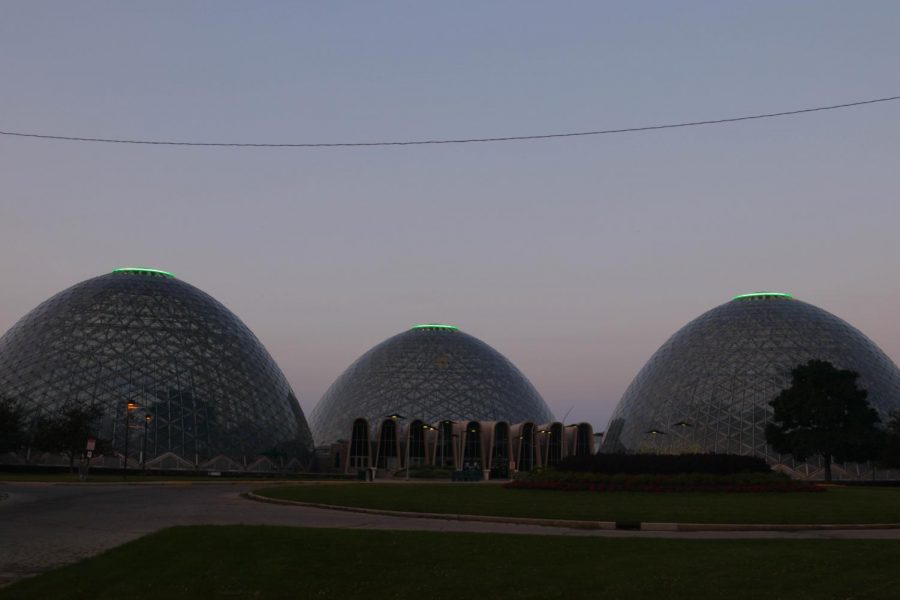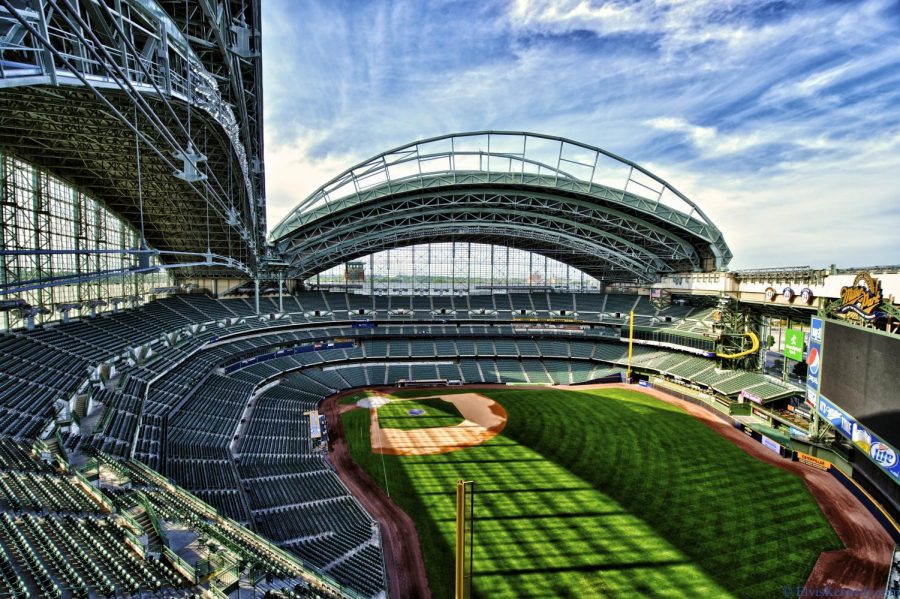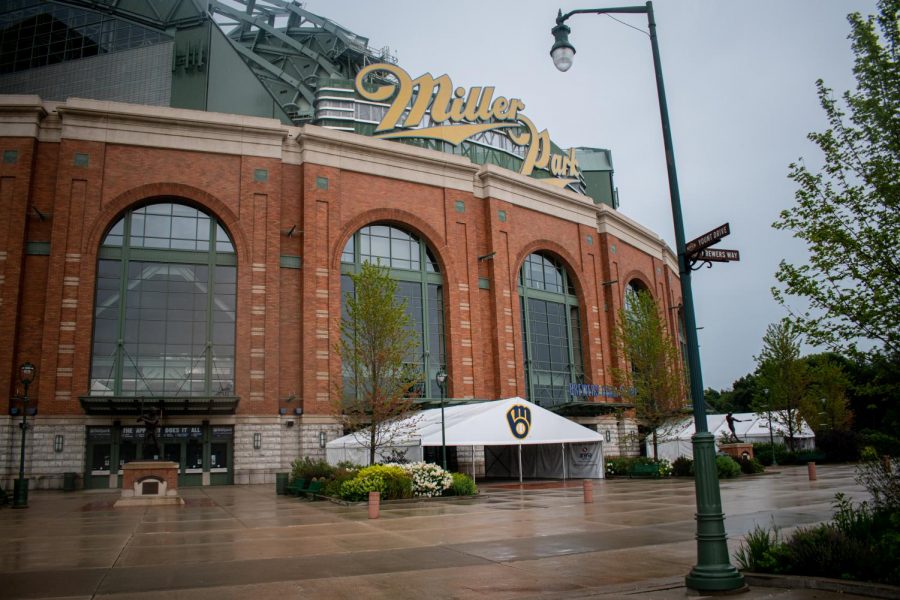The bat cracks. Cleats shuffle in the dirt. The ball hits the glove.
The 2020 baseball season is back. For the most part and for now, at least.
Just as spring training was underway, the coronavirus pandemic hit. Despite precautions planned since the postponement began, issues still remain. Unlike the NBA and the restart of their season in Orlando, the MLB chose not to do a “bubble” format and rather allow teams to play in their home ballparks.
As the season geared up, positive cases postpone many games, including the Brewers entire home-opening series at Miller Park due to multiple St. Louis Cardinals players testing positive.
Milwaukee Brewers’ reporter for Fox Sports Wisconsin and Broadcast & Digital features content director, Sophia Minnaert, says that even though challenges persist, “We’re playing baseball, it’s what people desperately wanted.”
Minnaert says people crave normalcy and entertainment so the fact that baseball is back to some capacity after a long anticipated wait, it provides a distraction too.
“We had no control over the timing, and we had no idea how long it was going to last,” she explains. “The hardest part was just not knowing, and not being able to prepare for what was next.”
The uncertainty of what is happening and not knowing the outcome is the source of many hardships across the country in these unusual times. Sports, particularly baseball, who have an entire season to account for, is no exception.
The Korean Baseball Organization was one of the first sports leagues in the world to get back to action, leading many to clamor for MLB to follow suit.
Negotiations went on between the MLB Player’s Association, and going back and forth about the terms, most notably the salary of the players, the result came in the form of a 60-game season.
Along with shortening the season are multiple rule changes. A three-batter rule for relief pitchers, extra innings starting with a runner on second base and the designated hitter being utilized in the National League for the first time.
With the goal of limiting travel due to COVID-19, teams will only play games against those in their region until the playoffs start. The Brewers, who are in the NL Central division, will only play teams in the NL Central and American League Central divisions.
The playoffs are also much different. They were expanded to eight teams in each league — 16 total — similar to the NBA. This means the top two teams in each of the six divisions, plus two wild-card teams, make the playoffs.
For the Milwaukee Brewers, among the expanded 30-man roster for the shortened season, only half of those players were on the team the previous season. Most notable among the many departures being Yasmani Grandal, Mike Moustakas and Eric Thames.
All of these changes were also happening in what is the 50th Anniversary of the Milwaukee Brewers. A re-made logo and new uniforms were debuted in celebration.
“There was a lot of turnover from the roster a year ago, and a lot of questions about what the team would look like,” Minnaert says. “Lots of things were planned and cancelled for the 50th anniversary, but everyone was still motivated by just wanting to play baseball.”
Teams head to their ballparks and have a second spring training, or “Summer Camp” in the middle of July. Intra-squad scrimmages are streamed online and excite fans for the return of baseball.
On Opening Day the Brewers take a familiar trip to Wrigley Field, only this time there was nothing familiar about it.
“It was extremely different from any Brewers-Cubs series, there was that certain kind of intensity and excitement that just wasn’t there,” Minnaert describes. “Everyone was thrilled to have baseball back, but you can’t understate how different the atmosphere is for everyone.”
The atmosphere has no fans in the stands. To fill the void, the MLB collaborate with the producers of the video game, MLB The Show, to play crowd noise through PA systems. Minnaert says most players enjoy the noises rather than the silence of an empty stadium.
Brewers season ticket holder, Rocco Frievalt, is one of those fans not able to do what he loves over the summer month. He enjoys experiencing baseball from the stands at the ballpark.
“Like any season you come into it’s really excited, and then everything got shutdown right before it started and we were left waiting for any type of positive news,” he describes. “Now, even though I’m sad we can’t see them in person, the fact that they’re playing gives us something to look forward to.”
Without fans in the stands, teams handle the empty space in their stadiums differently. Some teams put tarps over the seats, but many place a bunch of cardboard cutouts of fan’s faces in the seats in order to have it appear that fans are there.
“Stadiums are being utilized like we’ve never seen before,” Minnaert said. “I don’t think the players will ever get used to it and it will never feel like normal, but everyone’s doing their best to try and normalize it.”
Minnaert knows the meaning and the impact of what the baseball players along with her broadcast team are doing during these challenging times.
“Knowing what it means to the fans is motivating, and we all love what we do,” she said. “Just the fact that we’re able to get back to doing that is a great thing for everyone.”
This story was written by Matt Yeazel. He can be reached at matt.yeazel@marquette.edu or on Twitter @MJYeazel.
Disclosure: the author of this story was mentored in 2019-20 by Sophia Minneart through the Marquette Mentors program.

